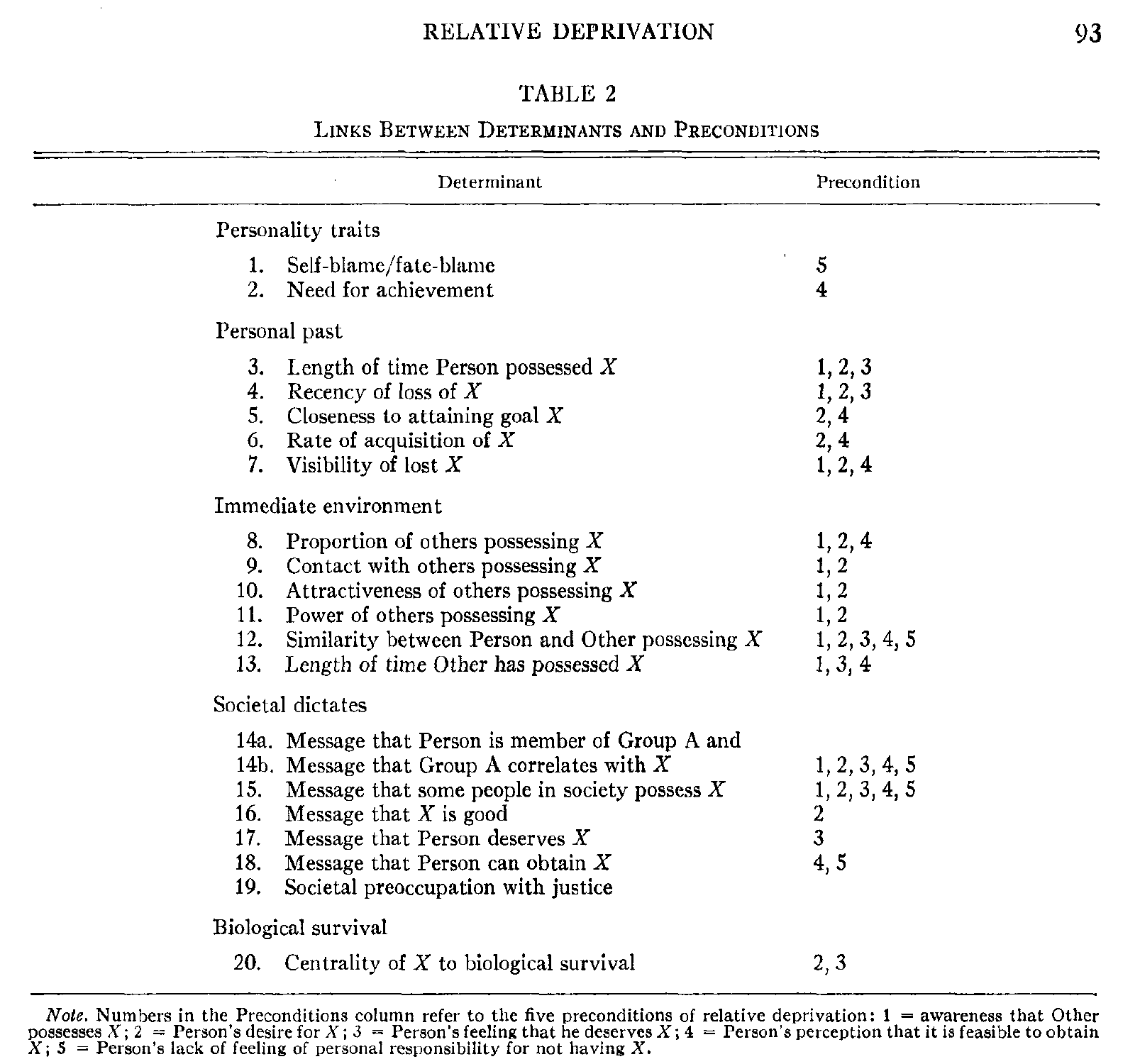Crosby 1976 - A model of egoistical relative deprivation
Crosby, F. (1976). A model of egoistical relative deprivation. Psychological review, 83(2), 85.
This is a really wonderful theory and paper. It is so complete in the way that it bridges existing theory. The extremely high level of detailed explanation makes it even more believable. It’s also important to note that this model is egoistical - meaning it only applies to the self. The term for deprivation in others is fraternal deprivation.
Summary
Closely related to inequity and justice, relative deprivation refers to the “feeling that one has been unjustly deprived of some desired thing.” There are five preconditions, all of which are necessary for relative deprivation to occur. First, a person needs to see that someone else possesses the desired object. Second, the person needs to actually want the desired object. Third, they need to feel entitled to the desired object. Fourth, they must believe it is possible to obtain the desired object. Fifth, they must “lack a sense of personal responsibility” for not possessing the desired object. The model is shown below…
The determinants of relative deprivation can be grouped into 1) the personality of an individual, 2) their specific past, 3) the larger environment (or context) in which they find themselves, and 4) their biological needs. Personality traits that influence relative deprivation include “self-blame or fate-blame” (which seem conceptually similar to internal or external locus of control) and need for achievement. In regards to a person’s past, if the person has at one time possessed the desired object, their relative deprivation increases. This is also affected by how long they possessed it, how long ago they stopped possessing it, how close they came to possessing it, and if the desired object is still “highly visible.” In terms of relative deprivation, the most influential factor in a person’s environment is how similar they perceive themselves to be to the current possessors of the desired object. This is also affected by the group membership of the individual. Finally, if an object is necessary for biological survival (as opposed to a luxury item), its lack will cause higher relative deprivation. An elaborated list of determinants is below.
Finally, a parsimonious model of resultants of relative deprivation shows that it can have both negative and positive outcomes, as illustrated below.
Application
This model is very useful in terms of diagnosing perceived unfairness in the workplace. Further research into relative deprivation should consider the overall relationship of contrast, framing, and anchoring.


